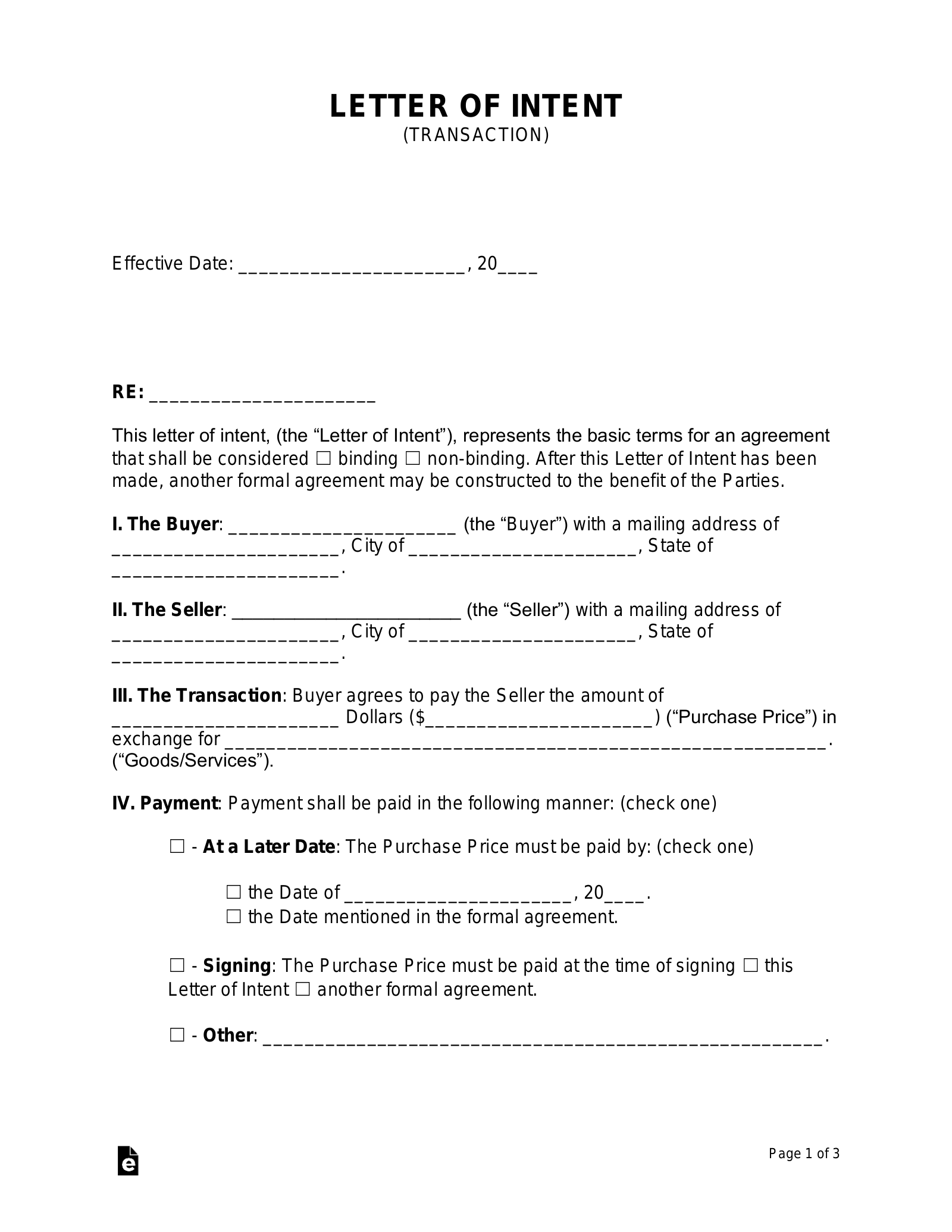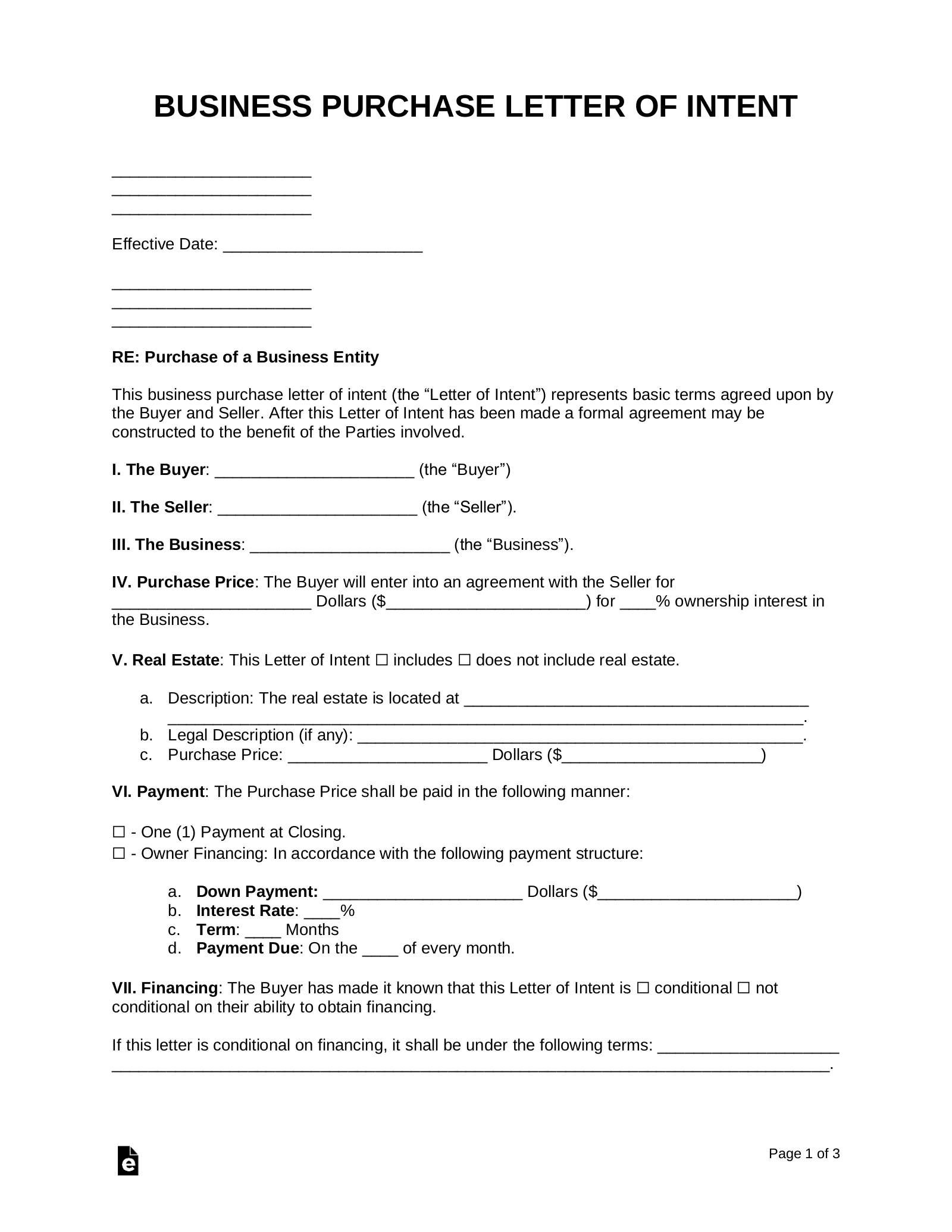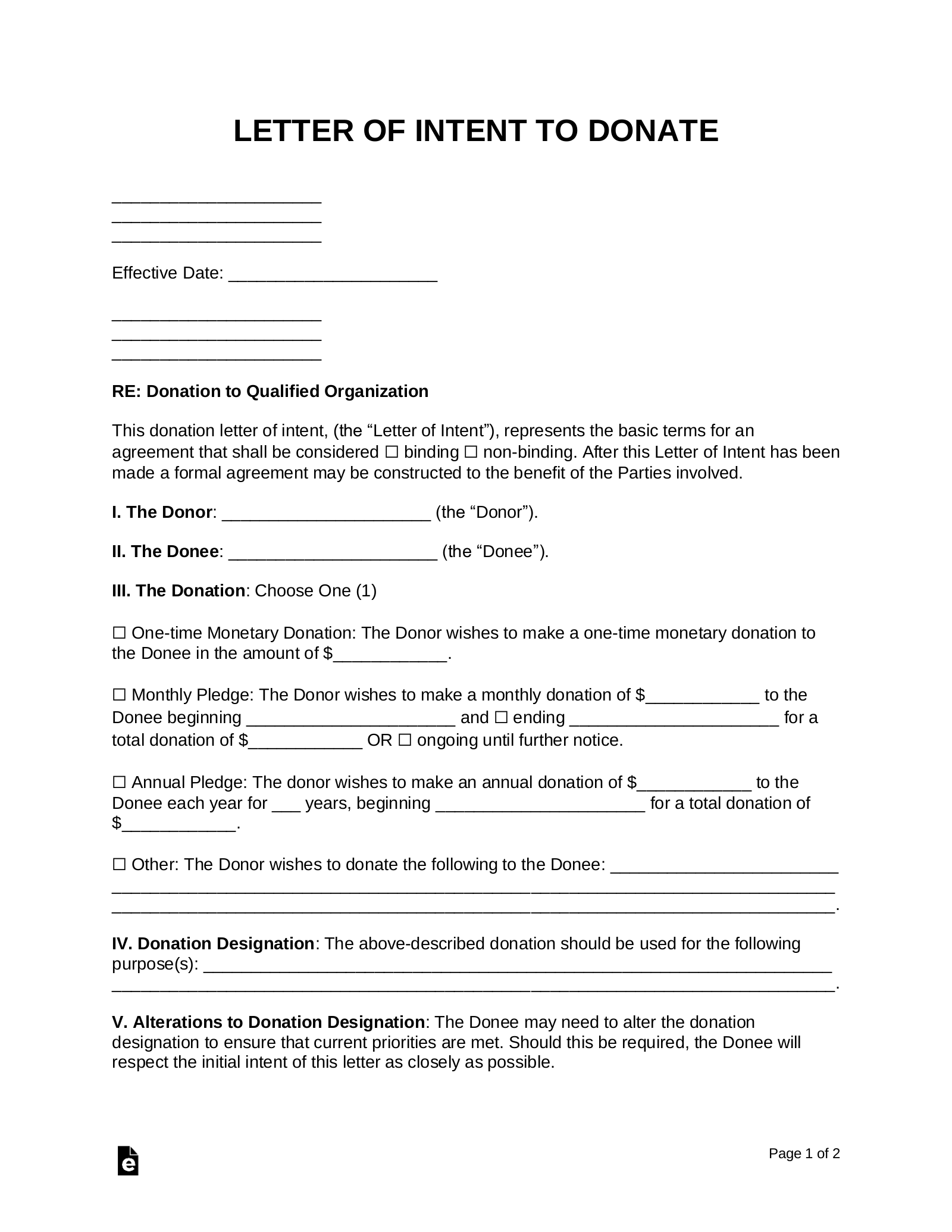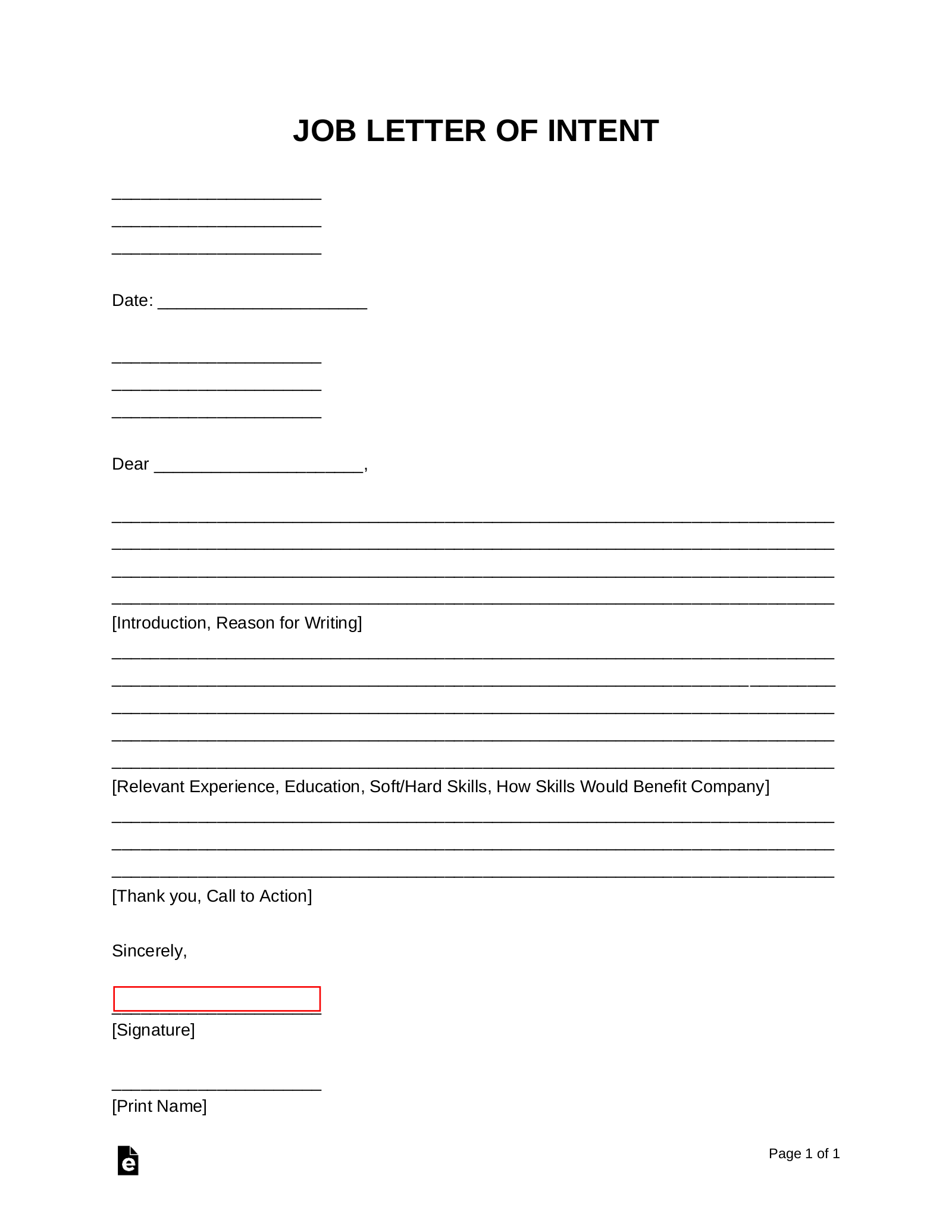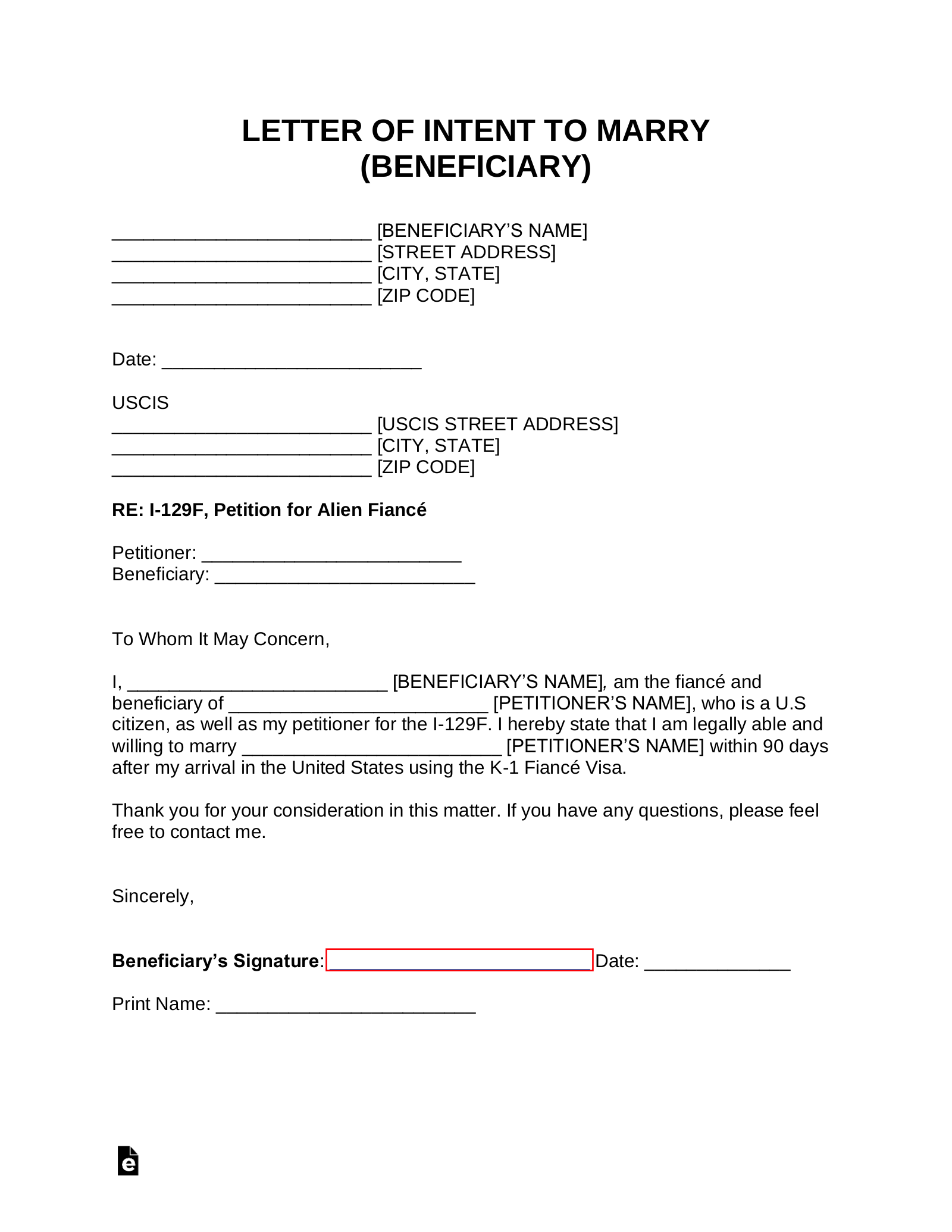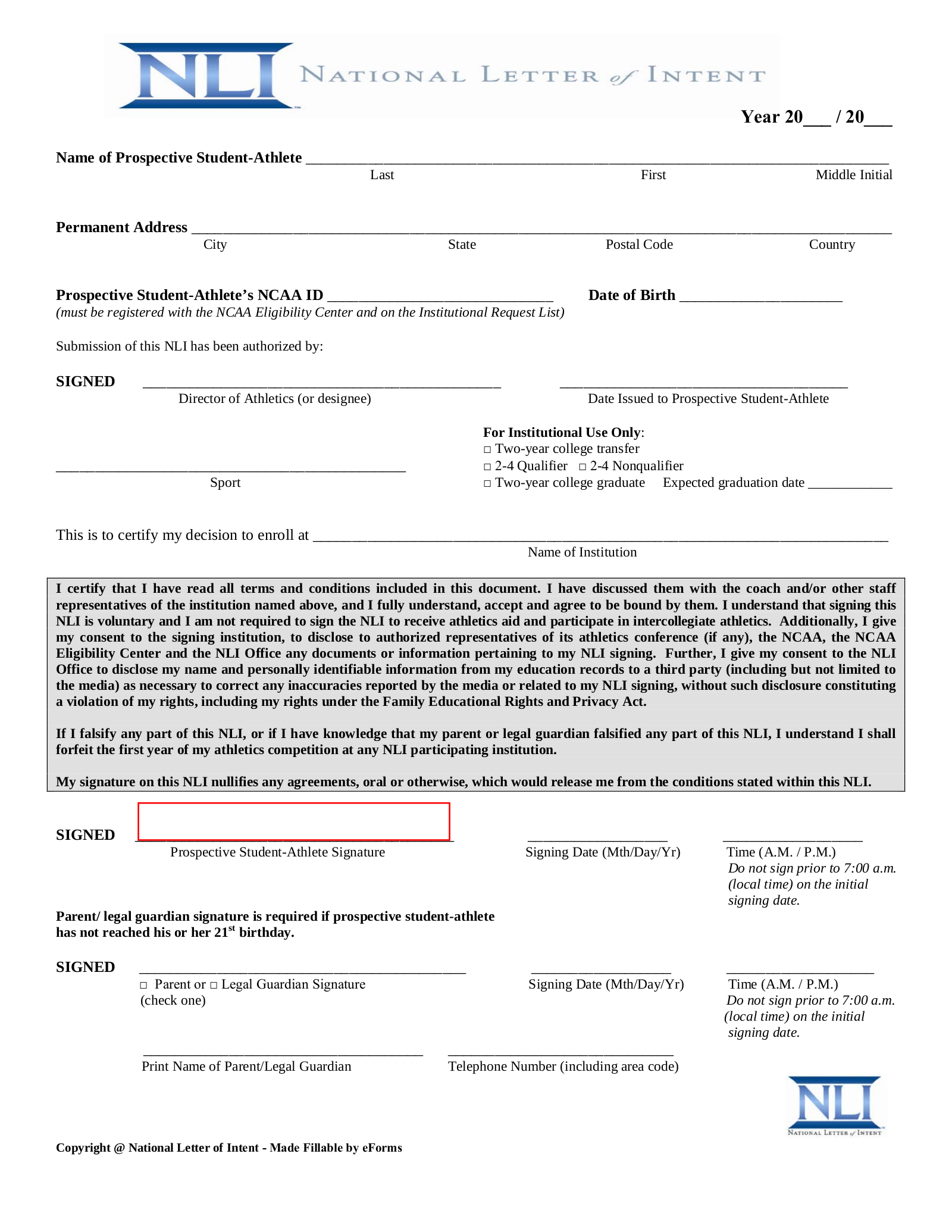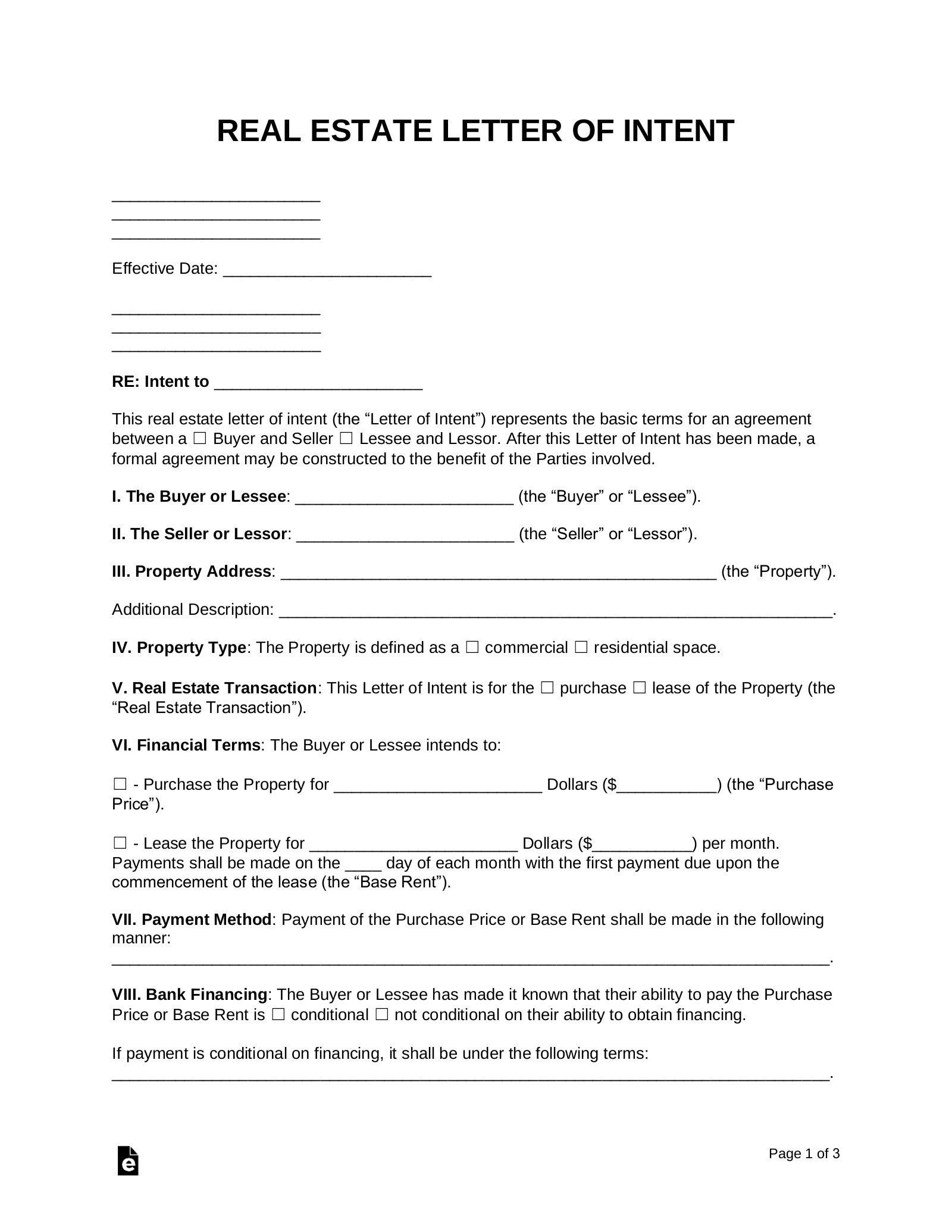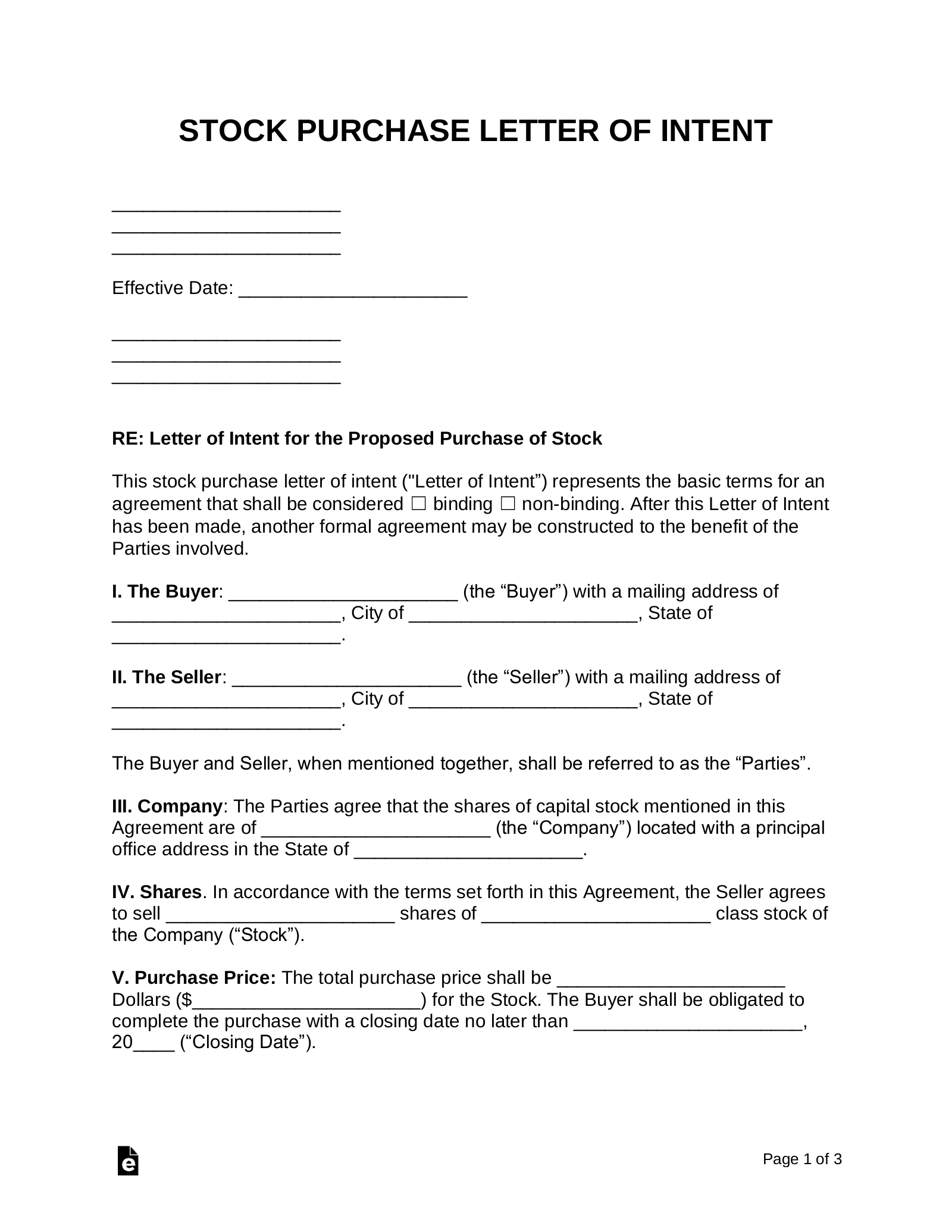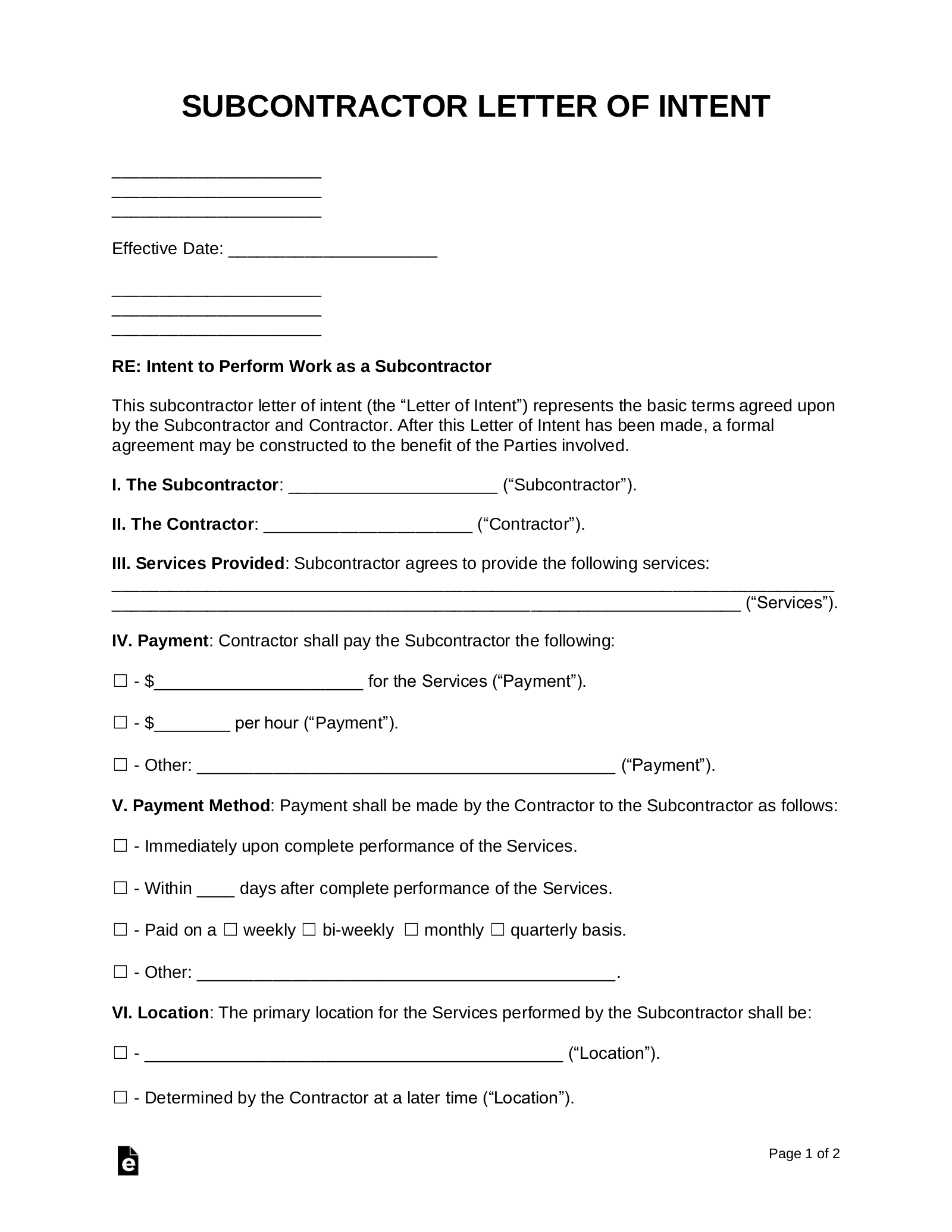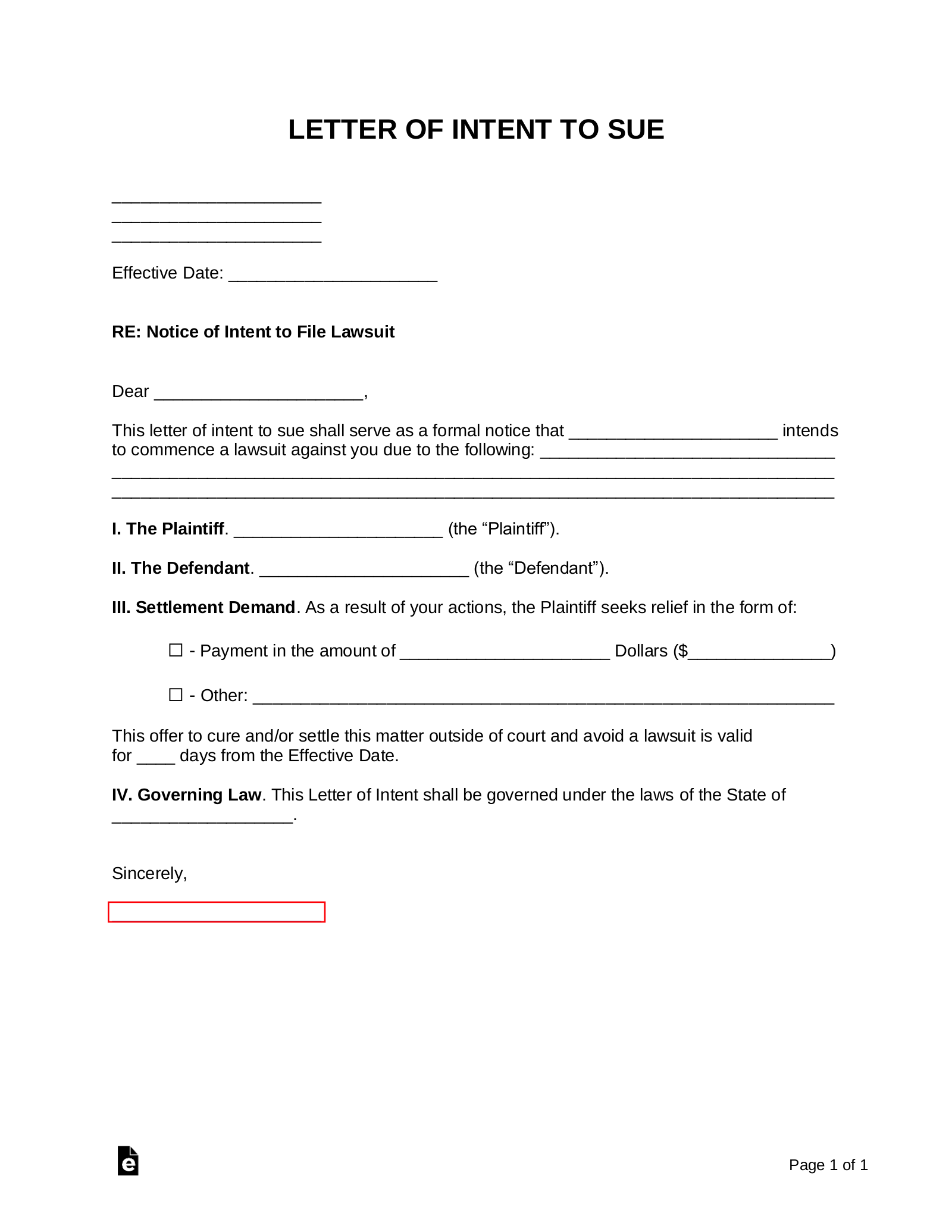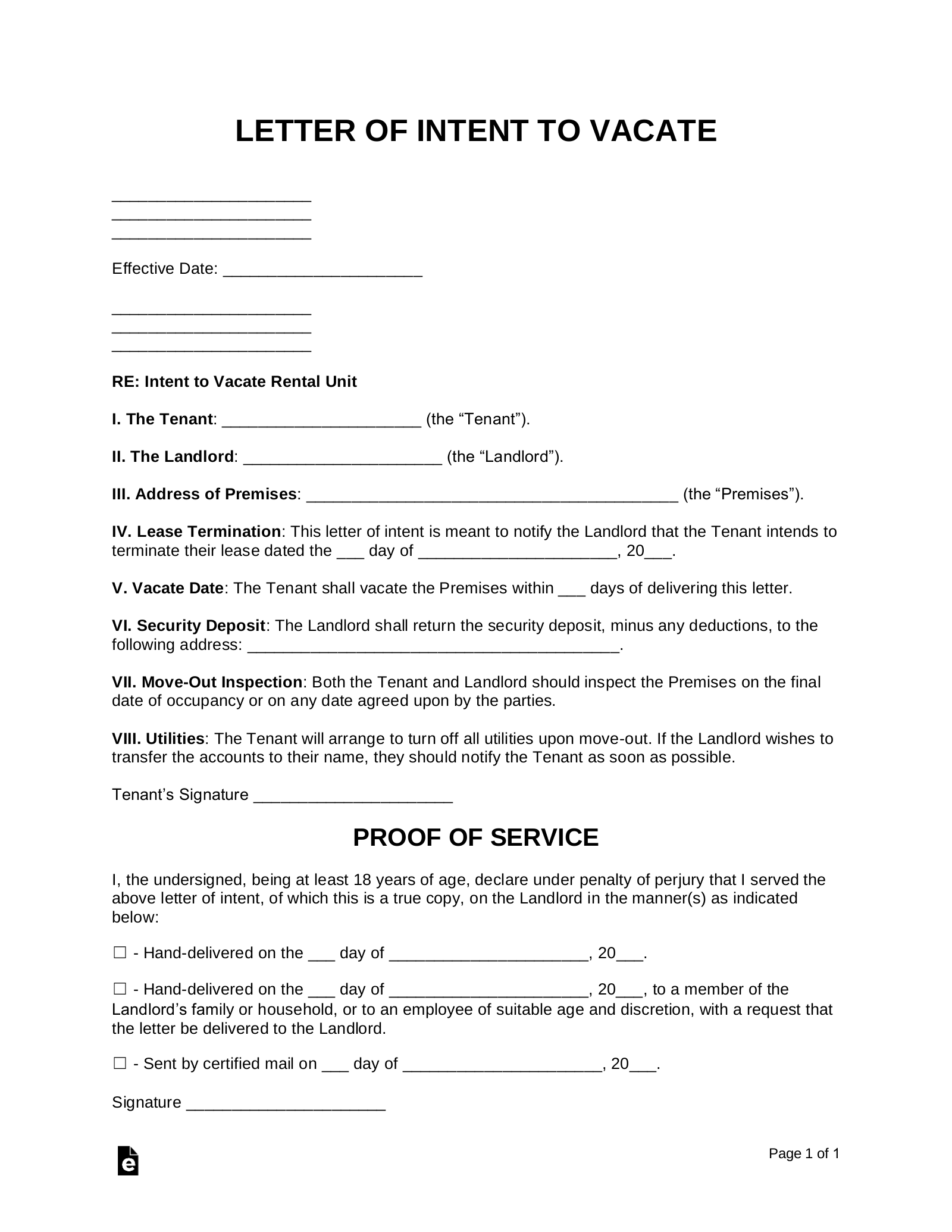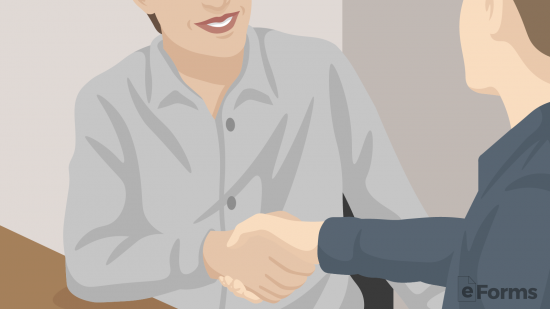Updated January 12, 2024
Or use ContractsCounsel to hire an attorney!
A letter of intent (LOI) is used to declare a person or party’s intent to commit to a certain act. In a business setting, an LOI outlines the preliminary terms of an agreement and typically includes a requirement that a formal contract must be written within a specified timeframe. If the parties do not create a good-faith agreement within the required time period, the LOI becomes void.
Outside of business transactions, a letter of intent is commonly used for
- Medical or graduate school: Intent to select a particular school to attend
- Employment: Intent to work at a particular company or business
- Grants: Intent to use a grant in a particular way if selected
Table of Contents |
By Type (14)
Is a Letter of Intent Legally Binding?
A letter of intent may be legally binding if it “sets forth all of the material terms of the agreed-upon transaction, including the parties, purchase price…“.[1]
However, it is most common for the parties to draft a non-binding letter of intent since its main purpose is only to propose the terms of a future, definitive agreement. Oftentimes, the letter contains a mixture of binding and non-binding provisions, depending on the terms the parties wish to defer to the future agreement (e.g., a purchase price that is still subject to negotiation). The parties should include specific language indicating the terms and conditions subject to revision by the later formal agreement and those already finalized.[2]
Binding vs. Non-Binding
- Binding Terms – Enforceable by law with repercussions for breaking any binding terms within the letter of intent.
- Non-Binding Terms – Unenforceable by law but act as a “morally binding” gesture between two parties. Such terms act as a promise by the parties to negotiate in good faith a formal, definitive agreement in the future.
What Should a Letter of Intent Include?
For transactional purposes, an LOI should include:
- Buyer and seller’s contact information
- The initial terms of the agreement
- The effective date
- A provision stating which parts of the agreement are binding or non-binding
For non-transactional purposes, such as school admissions or employment, the letter should include:
- A personal introduction
- An expressed intent to commit if accepted
- A compelling reason why an offer should be made
How Does a Letter of Intent Work? (3 steps)
2. Write the Letter of Intent

When enough details are agreed upon, a letter of intent may be written. It’s important to include as many agreed-upon items as possible.
- If the letter is binding, it is enforceable and should include the same terms as a standard agreement.
- If the letter is non-binding, it should only include the main terms, such as payment or compensation. Any additional items will be written in another agreement. It is also recommended to include a provision in the letter clearly stating that this document is non-binding.
Sample Letter of Intent (Transaction)
LETTER OF INTENT
(TRANSACTION)
Effective Date: [DATE]
RE: [SUBJECT OF LETTER]
This letter of intent, (the “Letter of Intent”), represents the basic terms for an agreement that shall be considered ☐ binding ☐ non-binding. After this Letter of Intent has been made, another formal agreement may be constructed to the benefit of the Parties.
1. The Buyer: [BUYER] (the “Buyer”) with a mailing address of [ADDRESS], City of [CITY], State of [STATE].
2. The Seller: [SELLER](the “Seller”) with a mailing address of [ADDRESS], City of [CITY], State of [STATE].
3. The Transaction: Buyer agrees to pay the Seller the amount of [AMOUNT] Dollars ($[X]) (“Purchase Price”) in exchange for [LIST GOODS/SERVICES] (“Goods/Services”).
4. Payment: Payment shall be paid in the following manner: (check one)
☐ At a Later Date: The Purchase Price must be paid by: (check one)
☐ the Date of [DATE].
☐ the Date mentioned in the formal agreement.
☐ Signing: The Purchase Price must be paid at the time of signing:
☐ this Letter of Intent.
☐ another formal agreement.
☐ Other: [LIST ALTERNATE PAYMENT TERMS].
5. Deposit: With the signing of this Letter of Intent, the Parties agree that: (check one)
☐ Deposit is Required: The Buyer shall remit to the Seller, together with this Letter of Intent, payment in the amount of [AMOUNT] Dollars ($[X]) (“Deposit”). The Deposit shall be accepted by the Seller as: (check one)
☐ Refundable under the following terms: [LIST TERMS].
☐ Non-Refundable.
☐ Deposit is NOT Required: The Buyer shall not be required to make payment at the time of signing this Letter of Intent.
6. Financing: The Buyer has made it known that: (check one)
☐ Conditional Upon Financing: This Letter of Intent is conditional on the Buyer’s ability to obtain financing. Financing shall be under the following terms: [LIST TERMS].
☐ NOT Conditional Upon Financing: This Letter of Intent is not conditional on the Buyer’s ability to obtain financing.
7. Currency: All mentions of money or the usage of the “$” icon shall be known as referring to the US Dollar.
8. Governing Law: This Letter of Intent shall be governed under the laws by the State of [STATE].
SELLER
Seller’s Signature ______________________ Date ______________
Print Name ______________________
BUYER
Buyer’s Signature ______________________ Date ______________
Print Name ______________________


